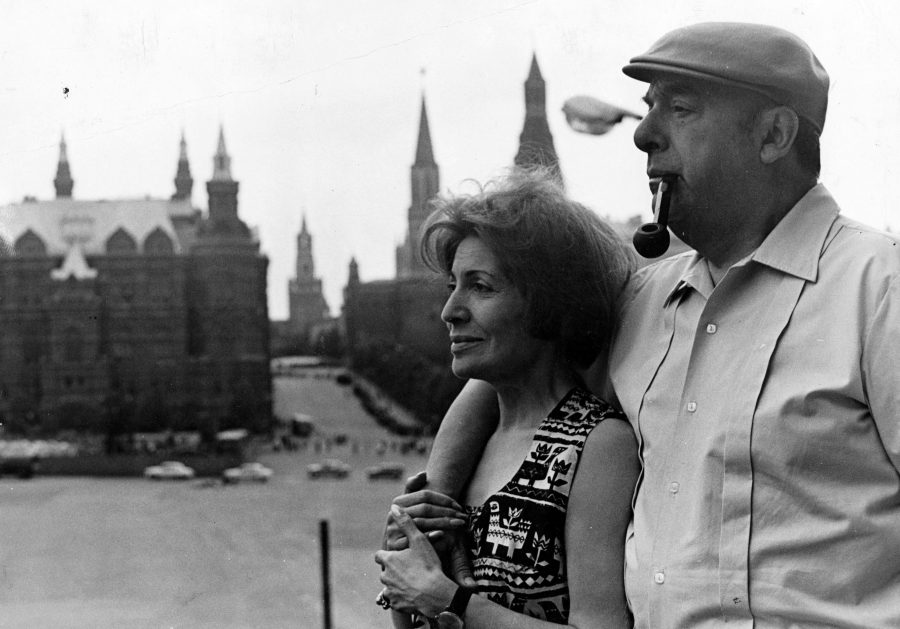
One of the more interesting things about the painting is that Rivera hid the profile of Neruda in the unruly hair on the right side of her head. But, according to Alejandro, not everyone was thrilled when Neruda abandoned his painter wife (who was a decade older than him) and took up with the much younger Matilde, a singer. Was Revera aware of this Freudian interpretation? Impossible to know. Which is understandable considering that in Greek mythology Medusa is a beautiful maiden with the ability to turn men into stone.Ī decade or so before Rivera painted Matilde as Medusa, Sigmund Freud wrote an article suggesting that Medusa was the “supreme talisman who provides the image of castration.” Then Alejandro took us inside one of the buildings, constructed like a lighthouse, to look at a painting by the Mexican artist Diego Rivera (Frida Kahlo’s husband) called “Medusa Matilde.” According to Alejandro, Neruda quite liked the painting Matilde, not so much. La Chascona was Neruda’s nickname for Matilde and referred to “her rebellious red hair.” In the courtyard behind the main part of the house, she told us that Neruda moved to La Chascona in 1955 with the woman who was to become his third wife, Matilde Urrutia, while still married to his second wife, the painter Delia del Carril. Our guide was a young college-aged woman named Alejandro. It just so happens one was just starting up and I was permitted to join a South African couple. On September 23, 1973, just twelve days after the defeat of Chile’s democratic regime, the man widely regarded as the greatest Latin American poet since Darío died in Santiago, Chile.Only a handful of people are allowed through the house cum museum at a time and usually you need to make a reservation at least a day in advance, so I was half expecting to be turned away when I showed up and asked if there was any way I could join the next English tour. During this time, Neruda received numerous prestigious awards, including the International Peace Prize in 1950, the Lenin Peace Prize and the Stalin Peace Prize in 1953, and the Nobel Prize for Literature in 1971.ĭiagnosed with cancer while serving a two-year term as ambassador to France, Neruda resigned his position, ending his diplomatic career. For the next twenty-one years, he continued a career that integrated private and public concerns and became known as the people’s poet. In 1952 the government withdrew the order to arrest leftist writers and political figures, and Neruda returned to Chile and married Matilde Urrutia, his third wife (his first two marriages, to Maria Antonieta Haagenar Vogelzang and Delia del Carril, both ended in divorce). During those years he wrote and published Canto general (1950). When the Chilean government moved to the right, they declared communism illegal and expelled Neruda from the Senate. Upon returning to Chile in 1943, he was elected to the Senate and joined the Communist Party. Named Chilean Consul to Mexico in 1939, Neruda left Chile again for four years. Neruda returned to Chile in 1938 where he renewed his political activity and wrote prolifically. He then moved to Paris and helped settle Spanish republican refugees in Chile. Neruda’s outspoken sympathy for the loyalist cause during the Spanish Civil War led to his recall from Madrid in 1937. He chronicled the horrendous years which included the execution of García Lorca in Espana en el corazon (1937), published from the war front. The outbreak of the Spanish Civil War in 1936 interrupted Neruda’s poetic and political development. Together, the two men founded a literary review called Caballo verde para la poesîa in 1935. After transferring to Madrid later that year, Neruda also met Spanish writer Manuel Altolaguirre.

While there, he began a friendship with the visiting Spanish poet Federico García Lorca. After serving as honorary consul in Burma, Neruda was named Chilean consul in Buenos Aires, Argentina, in 1933. In 1927, Neruda began his long career as a diplomat in the Latin American tradition of honoring poets with diplomatic assignments. The book made a celebrity of Neruda, who gave up his studies at the age of twenty to devote himself to his craft. The following year, he found a publisher for Veinte poemas de amor y una cancion desesperada (“Twenty Love Poems and a Song of Despair”). He published the volume under the pseudonym “Pablo Neruda” to avoid conflict with his family, who disapproved of his occupation.

In 1923, he sold all of his possessions to finance the publication of his first book, Crepusculario (“Twilight”). Born Ricardo Eliecer Neftalí Reyes Basoalto in the town of Parral in southern Chile on July 12, 1904, Pablo Neruda led a life charged with poetic and political activity.



 0 kommentar(er)
0 kommentar(er)
